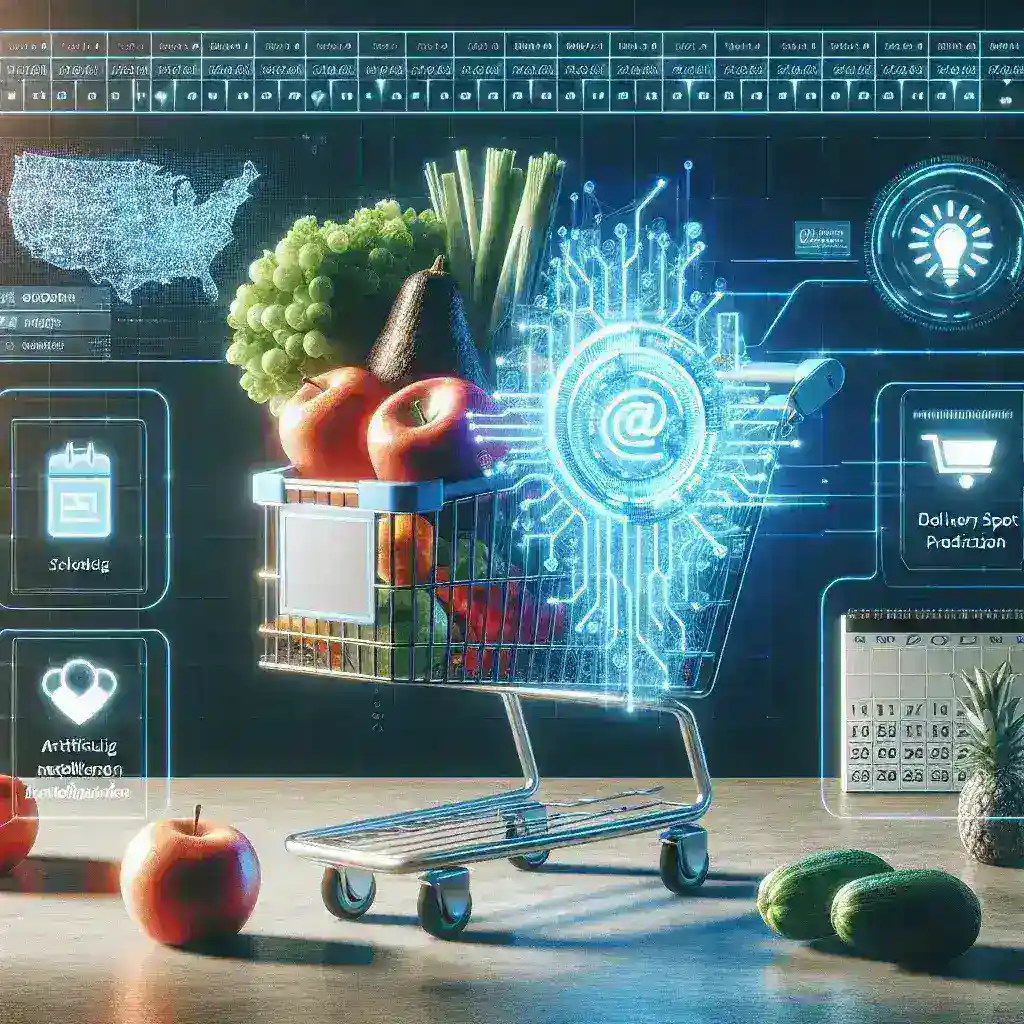
Introduction
In an era where convenience is paramount, Amazon Fresh is taking a significant step forward by piloting AI-powered delivery slot predictions for grocery orders in the U.S. This innovative technology promises to optimize the customer experience, streamline operations, and provide insights that can transform how grocery shopping is approached in the digital age.
The Need for Efficient Delivery Slot Management
As online grocery shopping continues to gain traction, the demand for timely and efficient delivery services is more critical than ever. Customers are increasingly relying on Amazon Fresh for their grocery needs, expecting flexible and reliable delivery options. The challenge lies in managing these delivery slots effectively, ensuring that customers receive their orders in a timely manner while maximizing delivery resources.
Understanding AI in Delivery Slot Prediction
AI technology utilizes algorithms and data analysis to predict customer behaviors and preferences. In the context of delivery slots, AI can analyze various factors such as:
- Historical delivery data
- Seasonal shopping trends
- Customer location and past ordering habits
- Traffic patterns and weather conditions
By taking these variables into account, Amazon Fresh can forecast optimal delivery windows, thus enhancing efficiency and customer satisfaction.
Historical Context: The Evolution of Grocery Delivery
The grocery delivery landscape has undergone significant changes over the past two decades. Initially dominated by traditional grocery stores, the market has shifted towards online platforms, with Amazon Fresh leading the charge. As e-commerce flourishes, the integration of AI into logistics has become a natural progression, promising to redefine the shopping experience further.
The Role of Data in AI Predictions
Data is the backbone of AI technology. Amazon Fresh collects vast amounts of data from user interactions, order histories, and delivery outcomes. This data can be leveraged to create predictive models that improve delivery slot suggestions. For instance, if a particular neighborhood has consistently ordered groceries on weekends, the AI can prioritize those slots for future deliveries, ensuring better allocation of resources.
Future Predictions: The Impact of AI on Grocery Delivery
As Amazon Fresh continues to develop its AI capabilities, several future predictions can be made:
- Increased Customer Satisfaction: With more accurate delivery slot predictions, customers will experience fewer delays and more reliable service.
- Operational Efficiency: Streamlined delivery processes will allow Amazon Fresh to allocate resources more effectively, leading to reduced operational costs.
- Personalized Shopping Experiences: By understanding customer preferences, Amazon Fresh can tailor marketing and promotional strategies to individual users.
Pros and Cons of AI-Powered Delivery Slot Predictions
While the benefits of AI integration are significant, it is essential to consider potential drawbacks:
Pros:
- Enhanced efficiency in managing delivery slots.
- Improved customer satisfaction through timely deliveries.
- Data-driven insights for better inventory management.
Cons:
- Potential privacy concerns with data collection.
- Dependence on technology may lead to challenges if systems fail.
- Initial investment costs for implementing AI solutions.
Step-by-Step Guide to AI-Powered Delivery Slot Prediction
Implementing AI for delivery slot prediction involves several critical steps:
- Data Collection: Gather comprehensive data from various sources, including customer profiles and delivery histories.
- Data Analysis: Employ AI algorithms to analyze the collected data for patterns and trends.
- Model Development: Create predictive models that can assess the likelihood of delivery success based on various factors.
- Testing and Optimization: Test the models in real-world scenarios and optimize them for accuracy.
- Implementation: Roll out the AI-driven delivery slot predictions to customers.
Real-World Examples of AI in Delivery Services
Several companies have successfully integrated AI into their delivery processes, setting benchmarks for Amazon Fresh:
- Domino’s Pizza: Uses AI to predict customer ordering patterns, ensuring timely deliveries.
- Uber Eats: Implements algorithms that optimize delivery routes based on real-time data.
- Walmart: Leverages AI to forecast demand and manage inventory efficiently.
Cultural Relevance of AI in Grocery Shopping
The rise of AI in grocery shopping reflects broader cultural shifts towards technology and convenience. Consumers are increasingly comfortable with digital platforms and expect brands to provide seamless experiences. As grocery shopping continues to evolve, the integration of AI will likely play a pivotal role in shaping future consumer behaviors.
Expert Insights on the Future of Grocery Delivery
Industry experts emphasize the importance of AI in maintaining competitive advantage in grocery delivery. According to Jane Doe, an e-commerce analyst, “AI not only enhances operational efficiency, but it can also significantly improve customer loyalty and retention. The future of grocery shopping lies in smart technologies that cater to evolving consumer needs.”
Conclusion
Amazon Fresh’s pilot of AI-powered delivery slot predictions marks a significant milestone in the grocery delivery industry. As the landscape continues to evolve, leveraging AI technology will be crucial in meeting consumer demands and optimizing operational efficiencies. The future of grocery shopping is not just about delivering products; it’s about creating a personalized, seamless experience for customers.
Leave a Reply